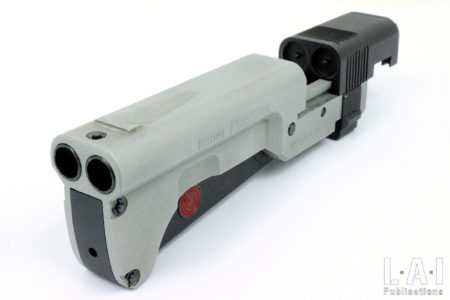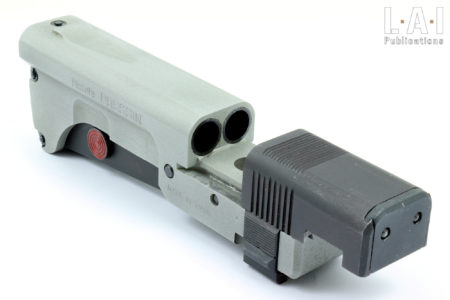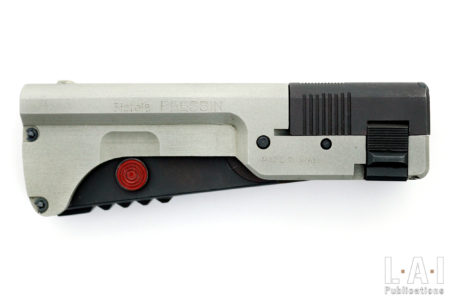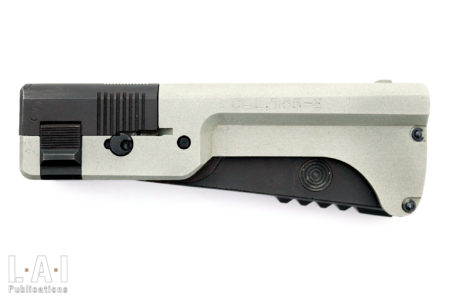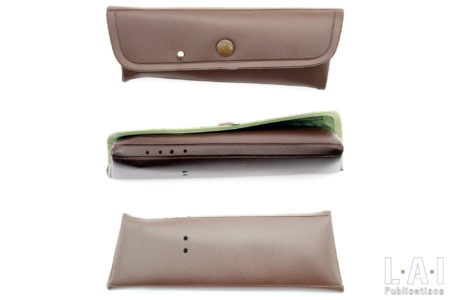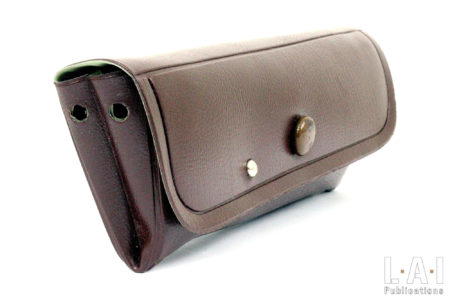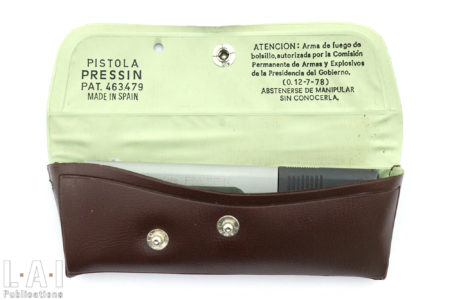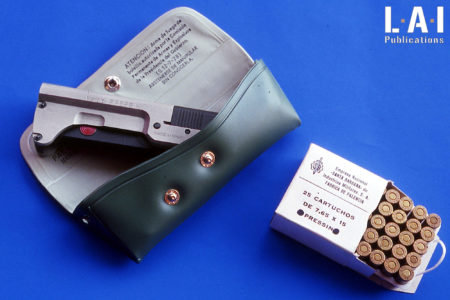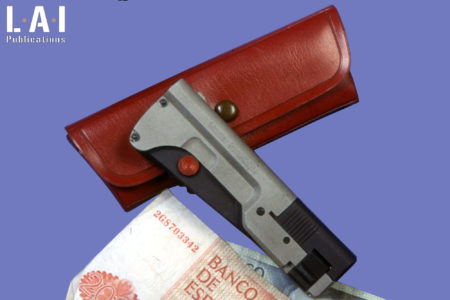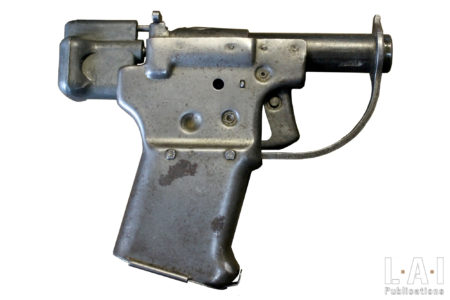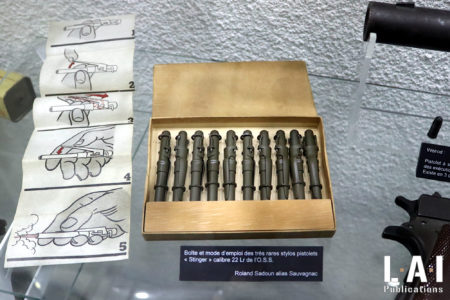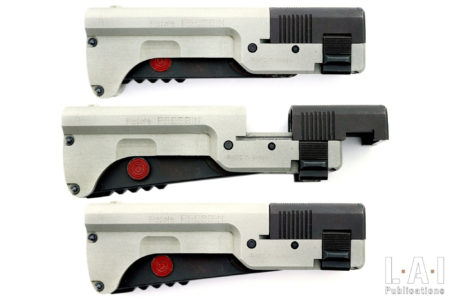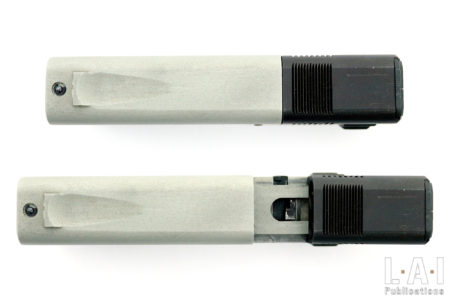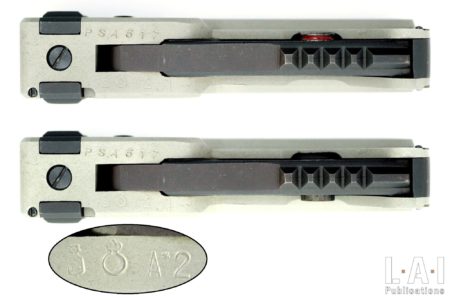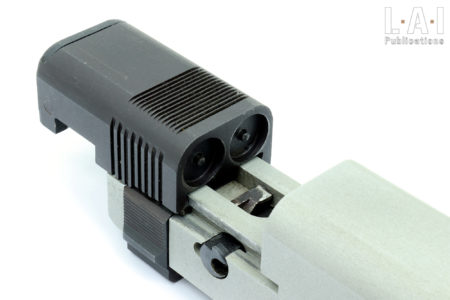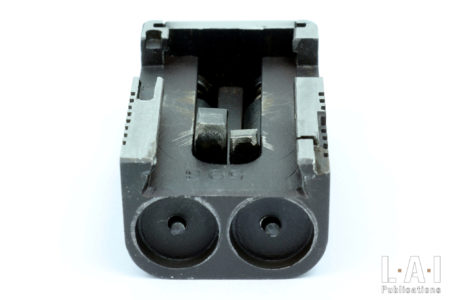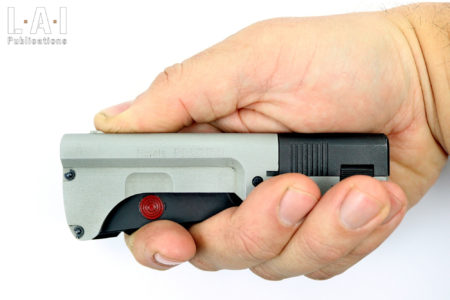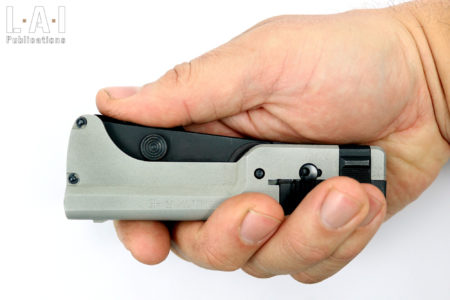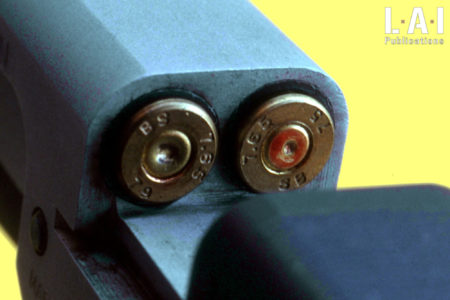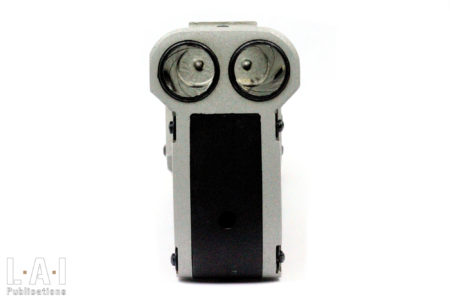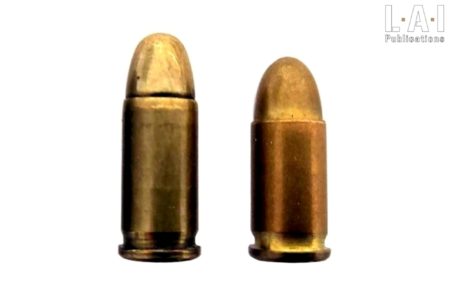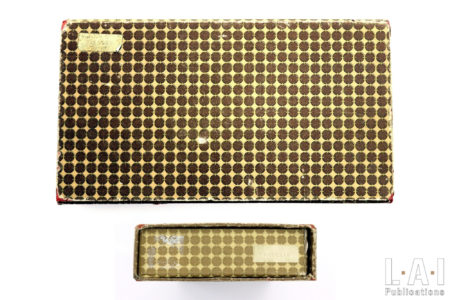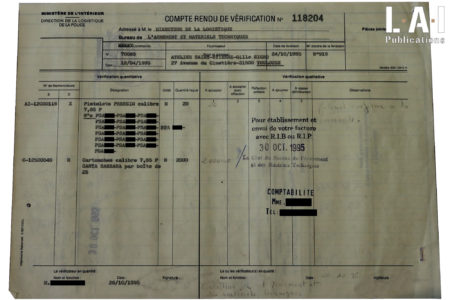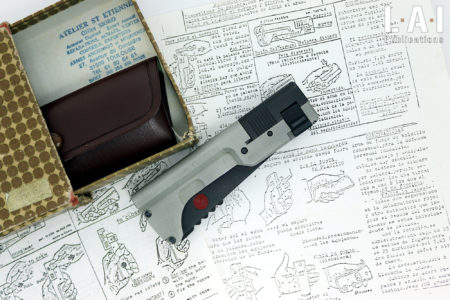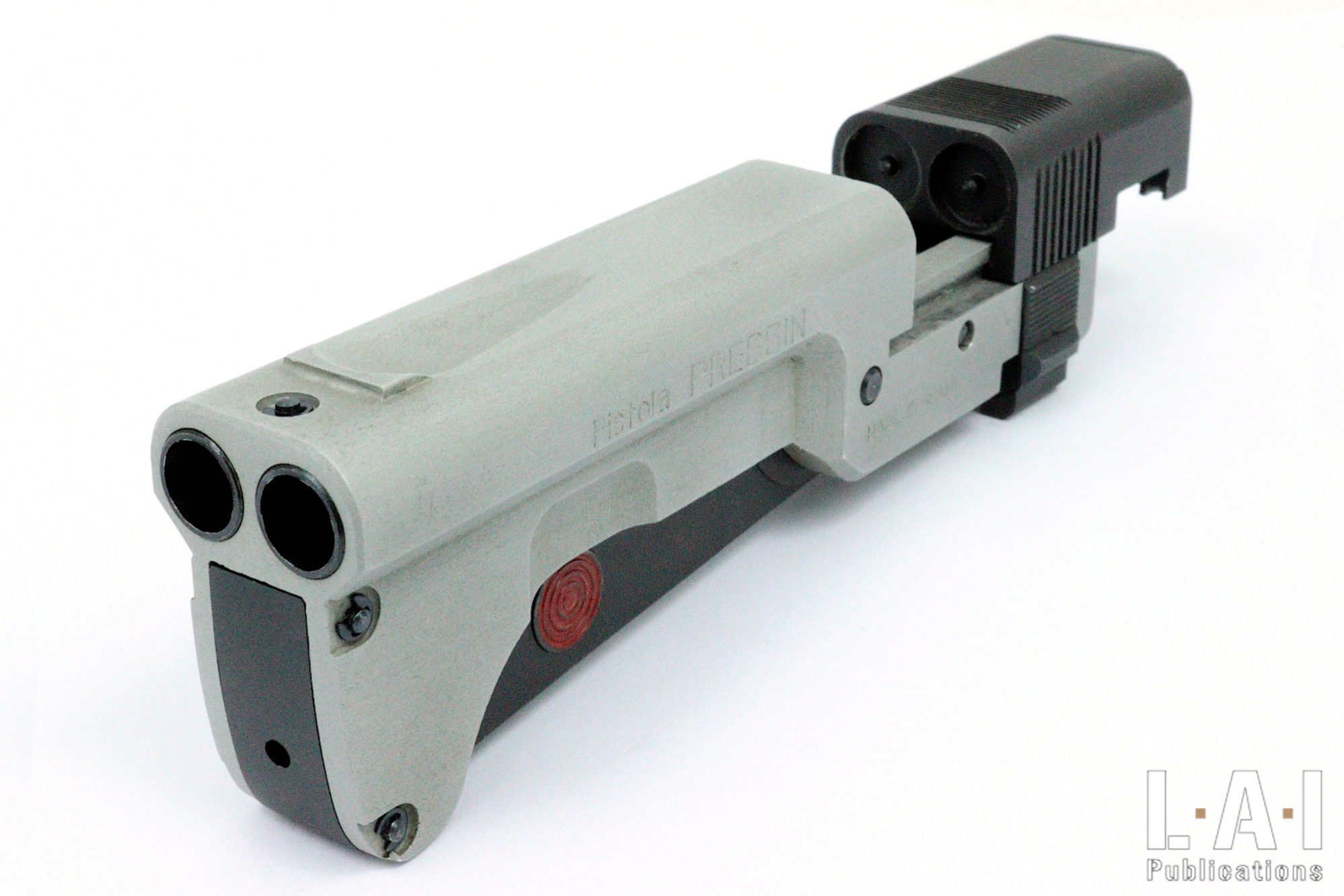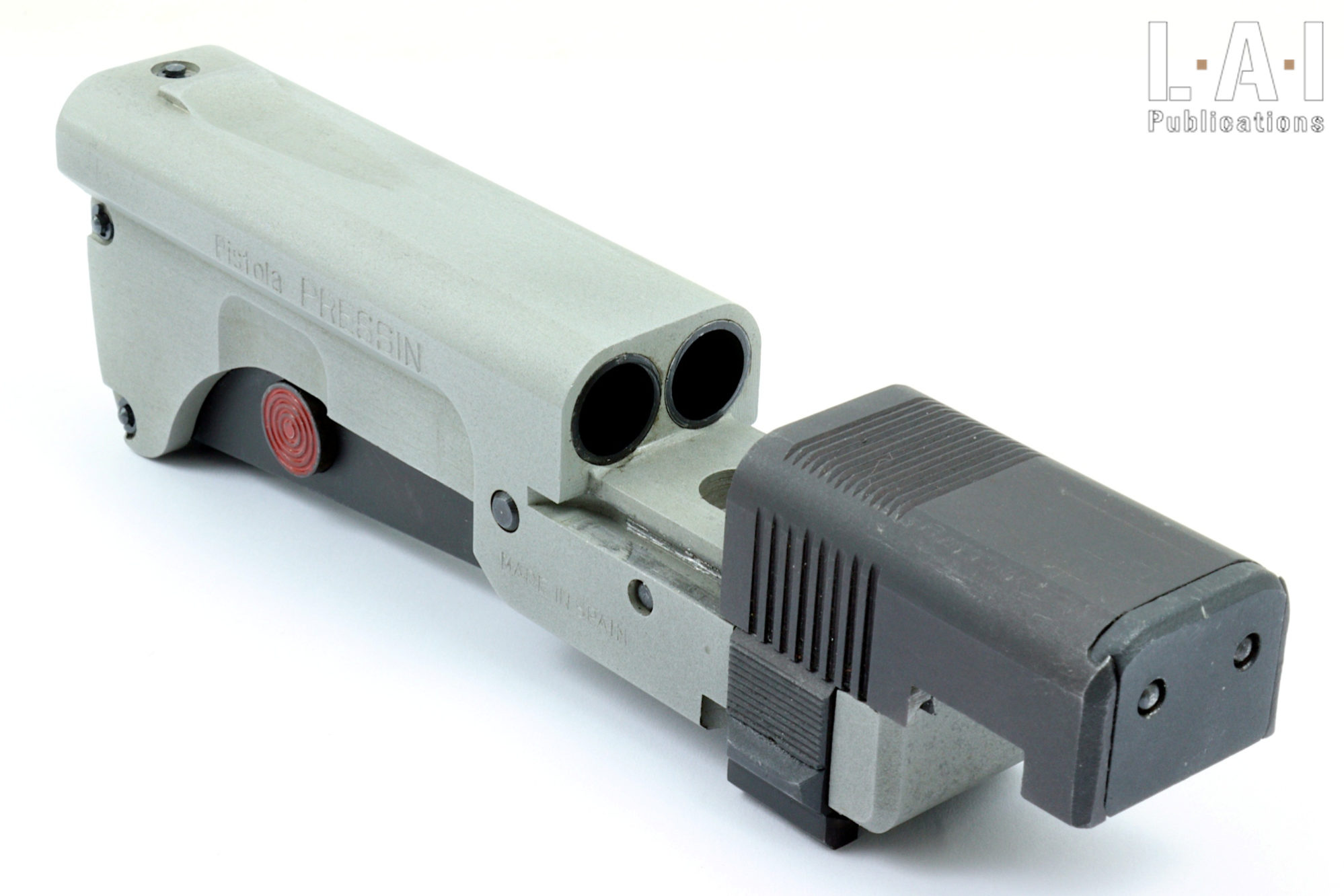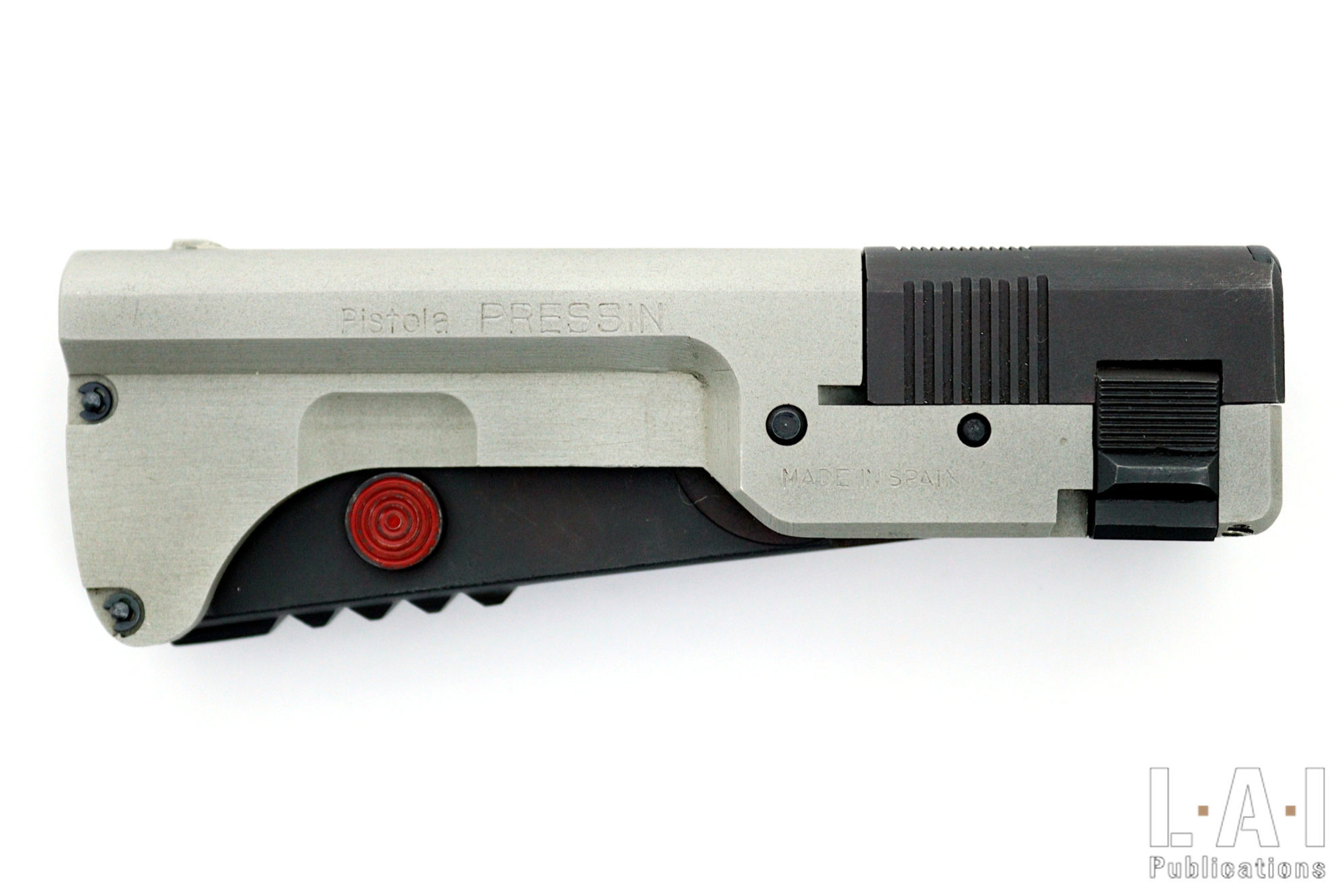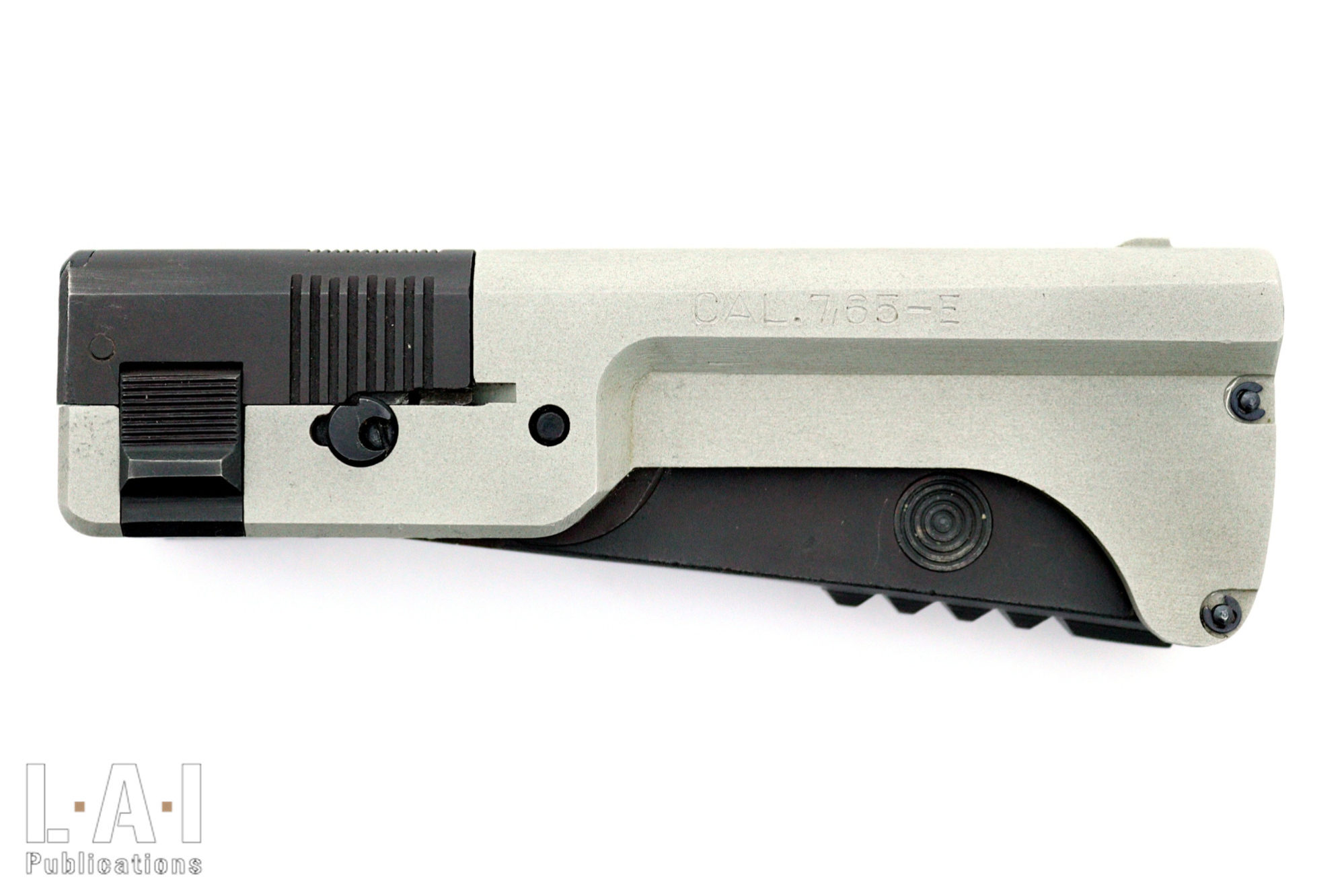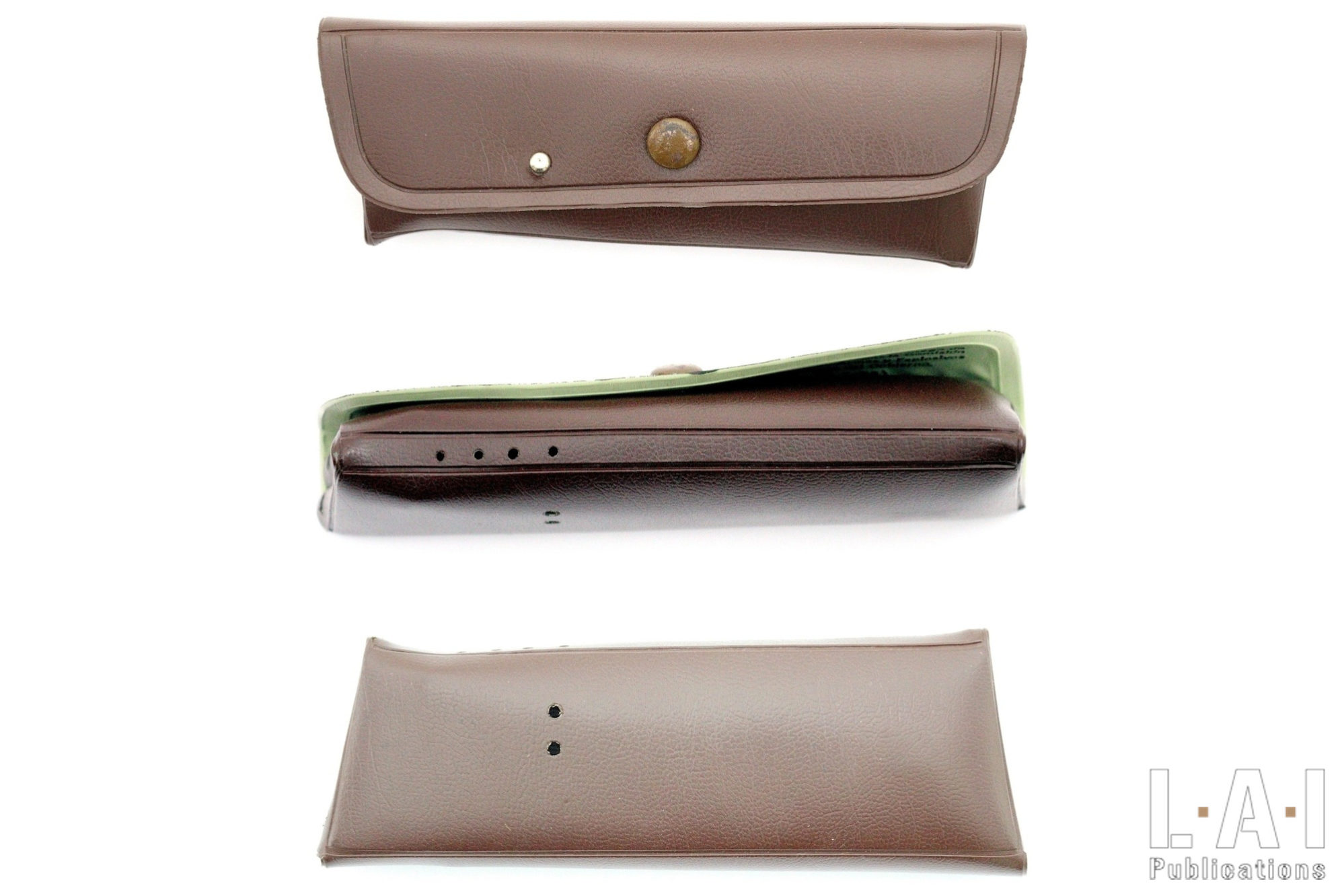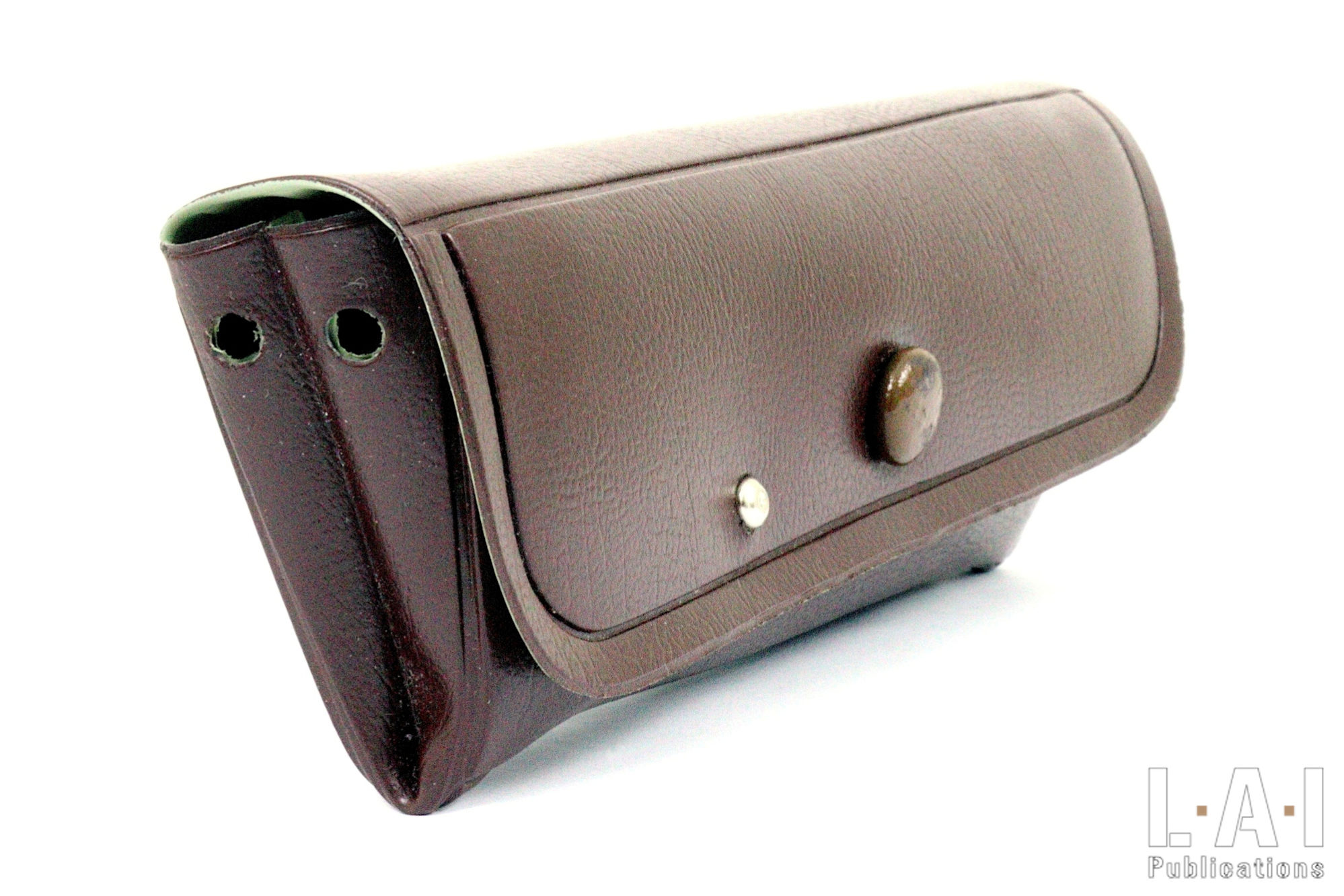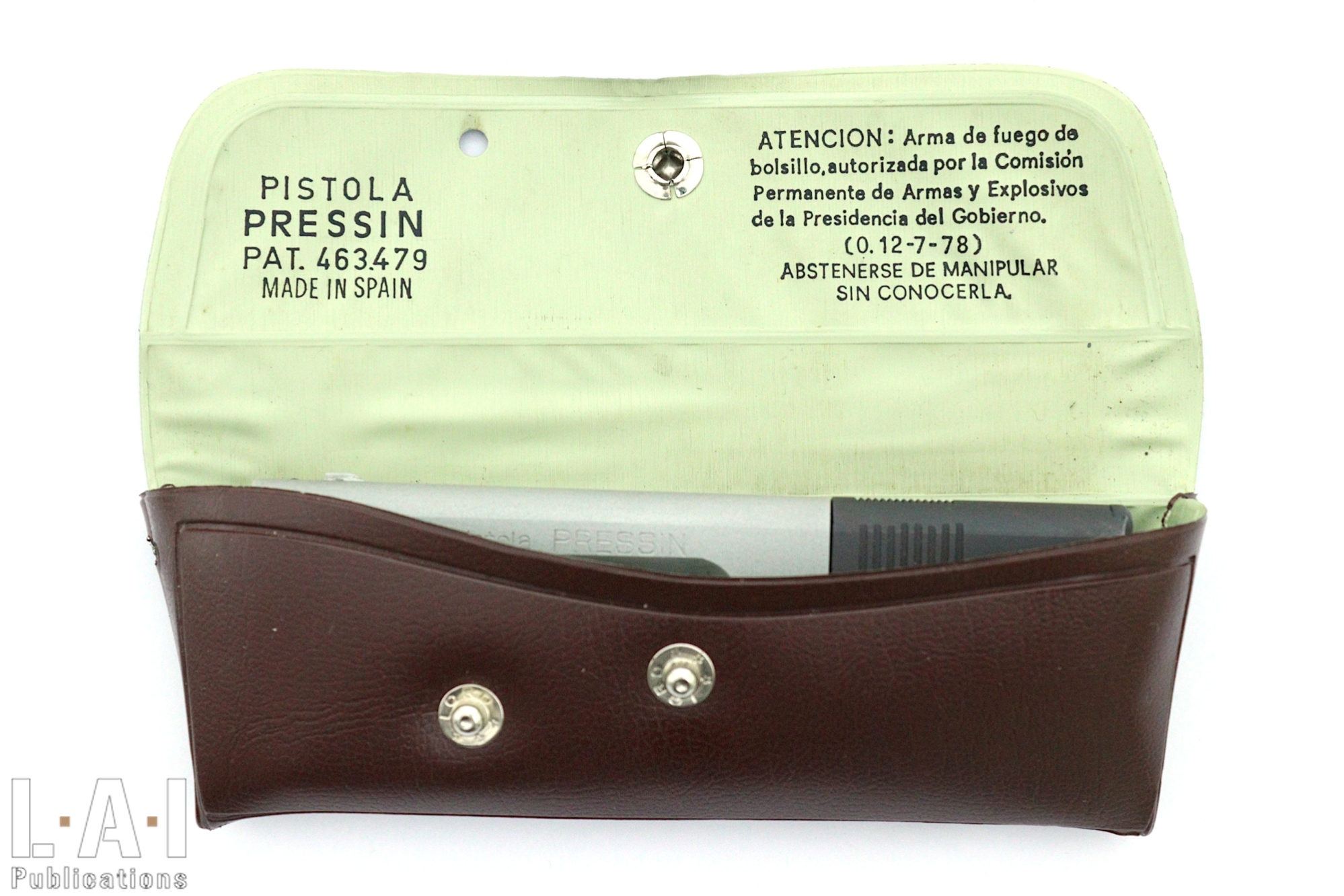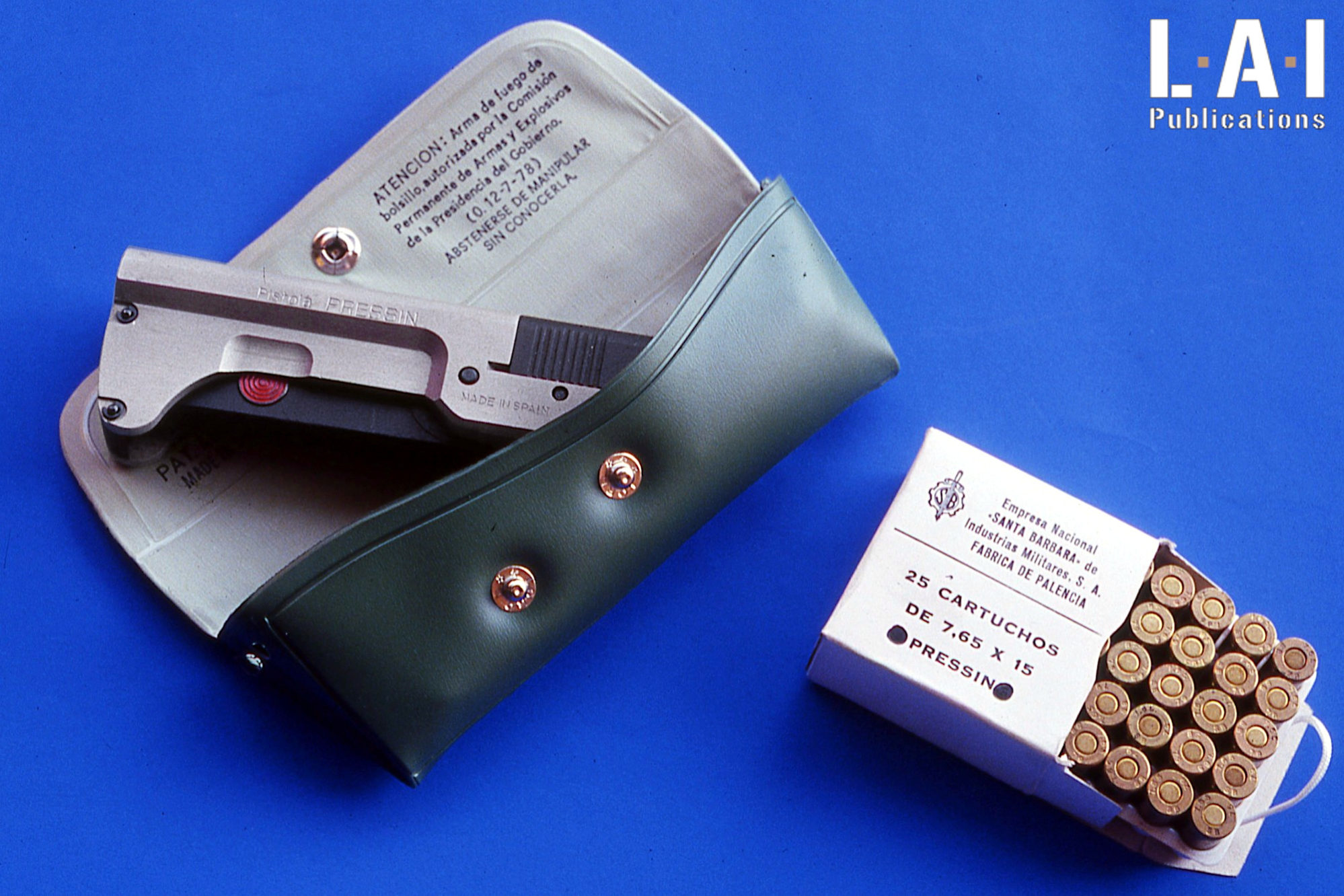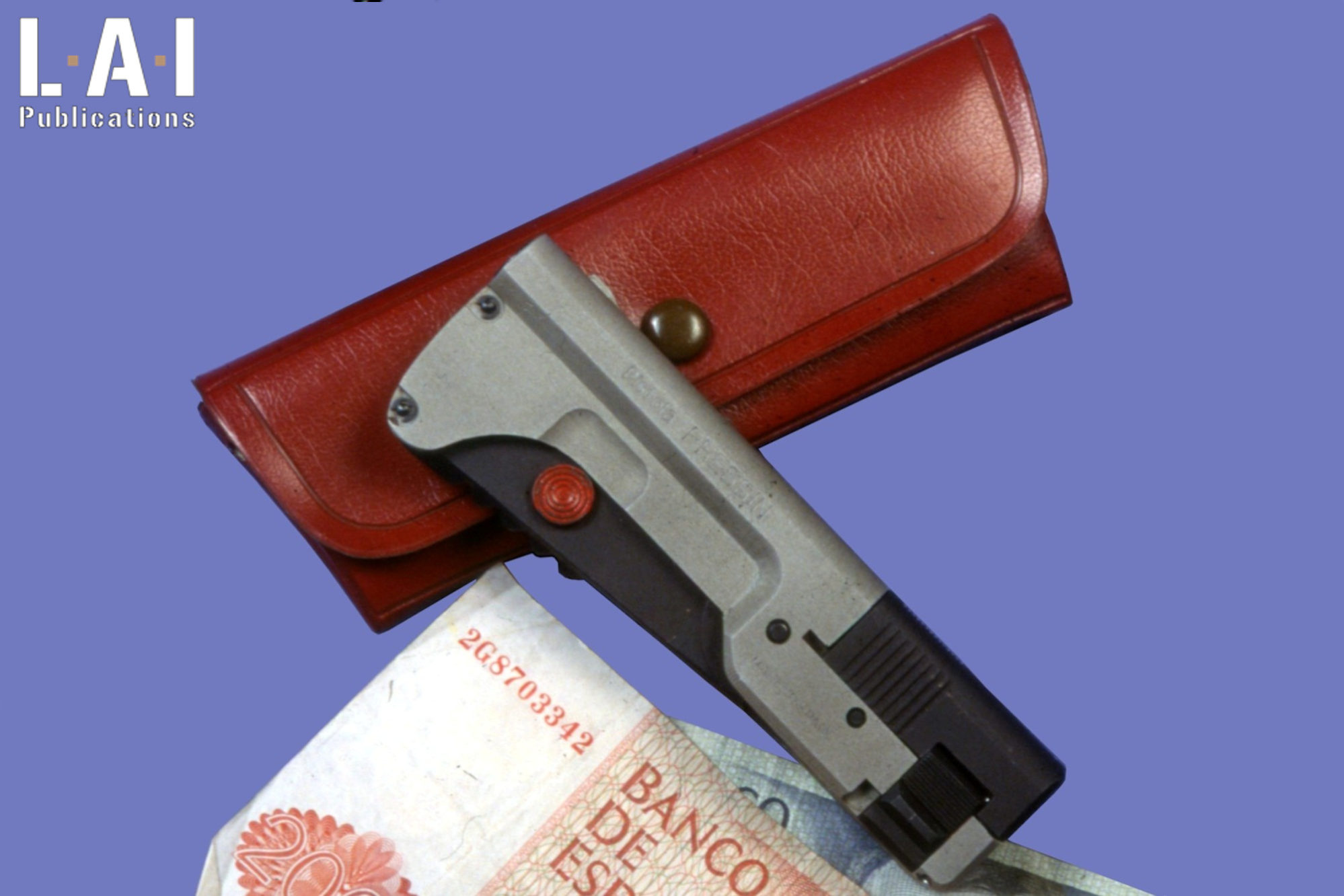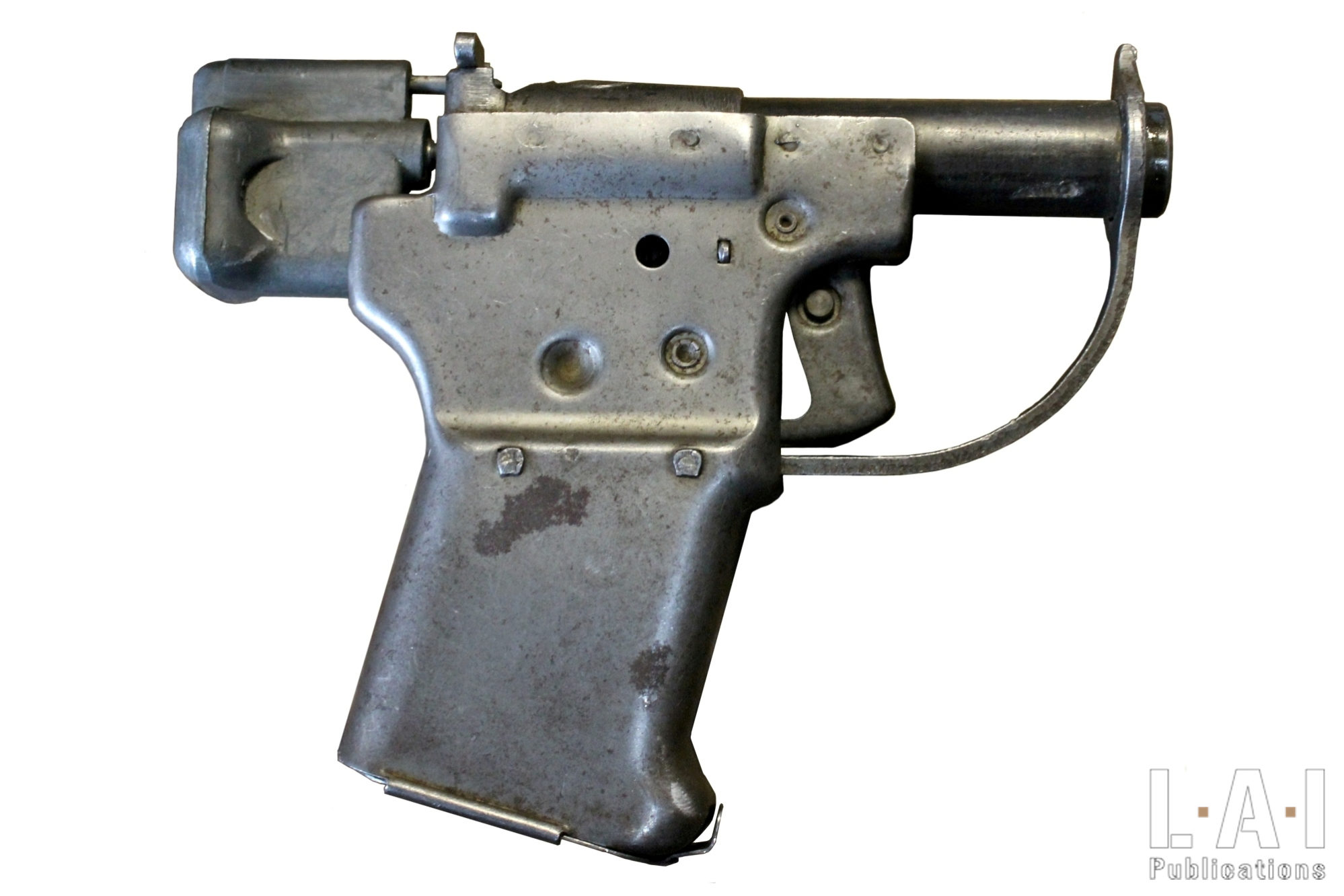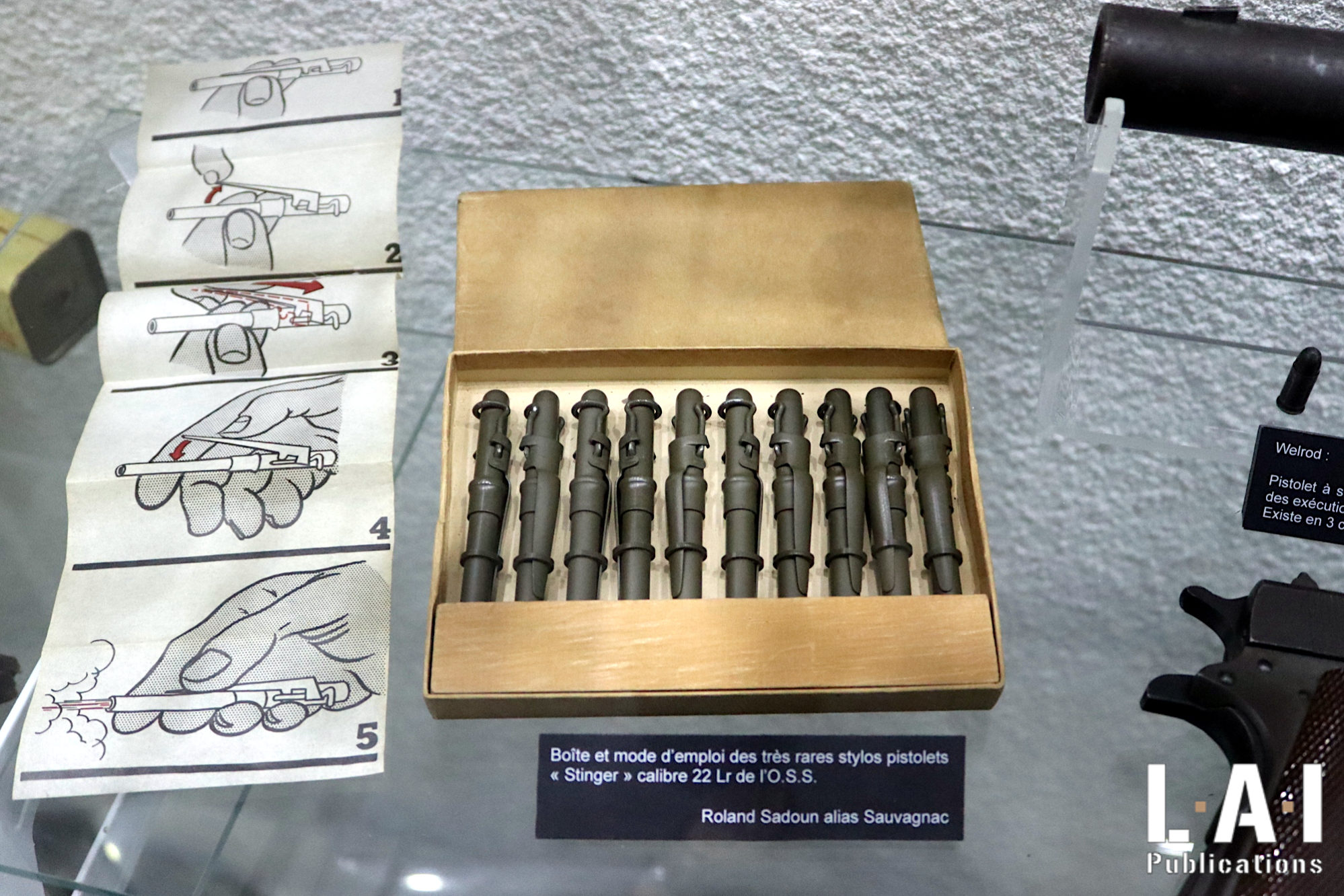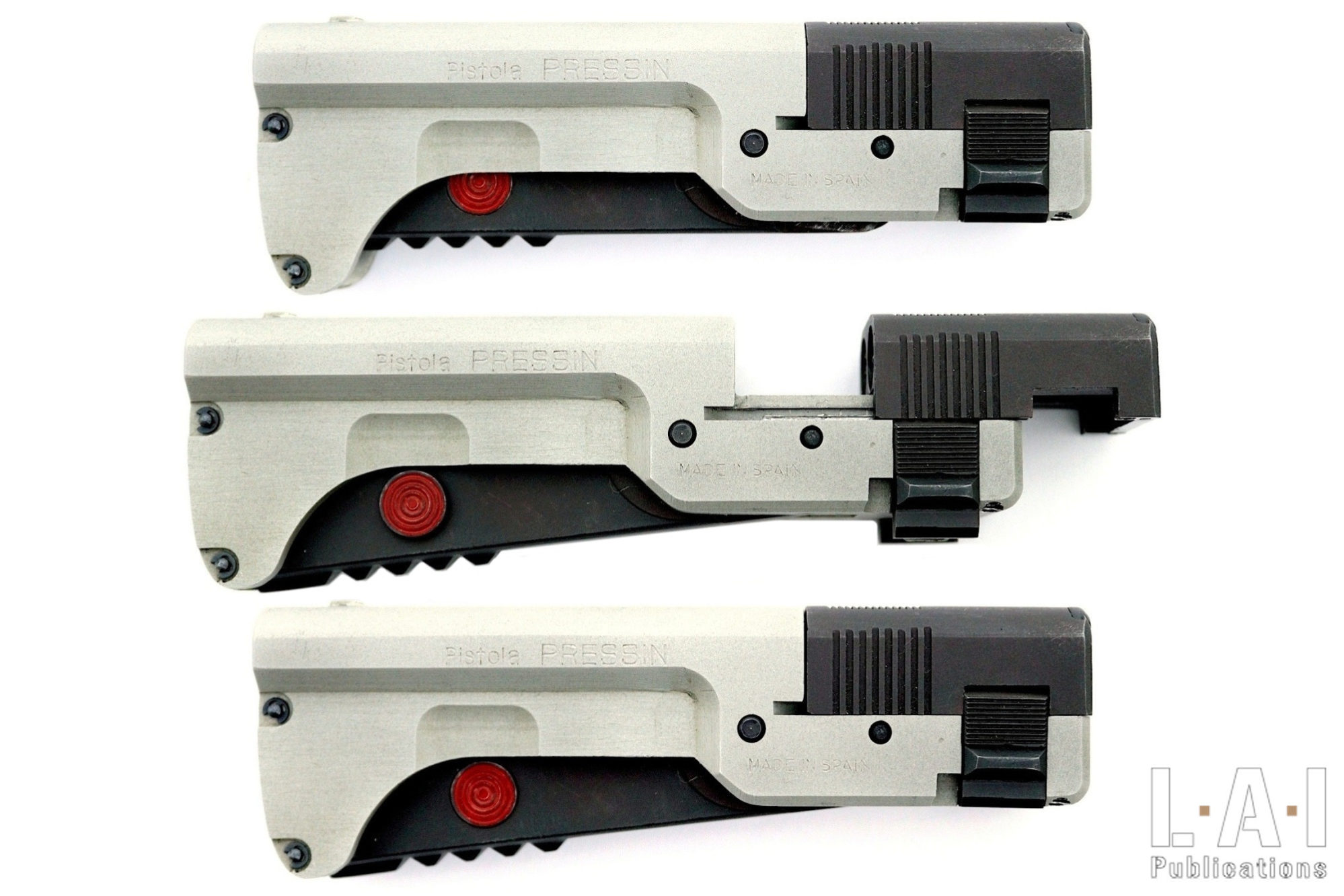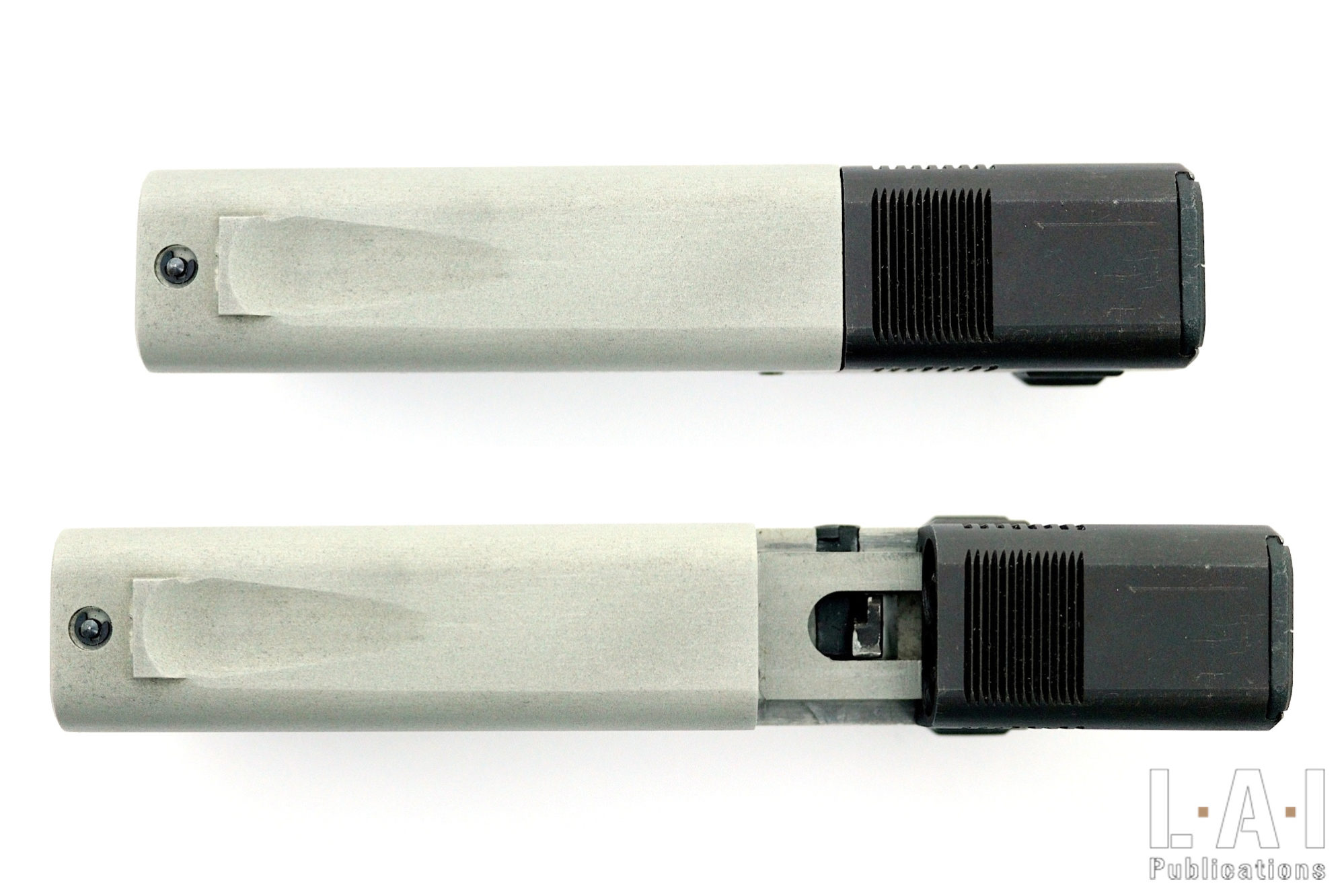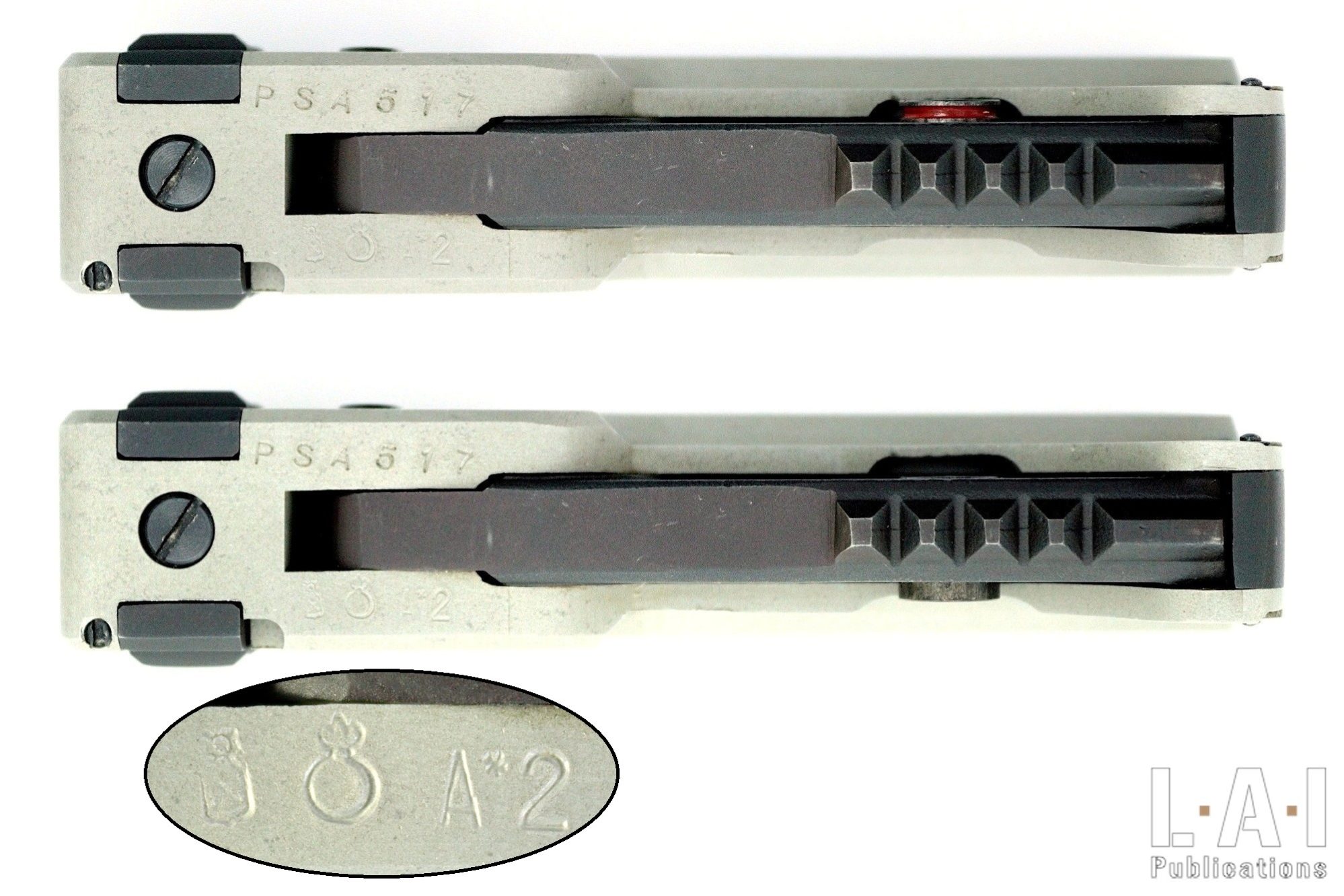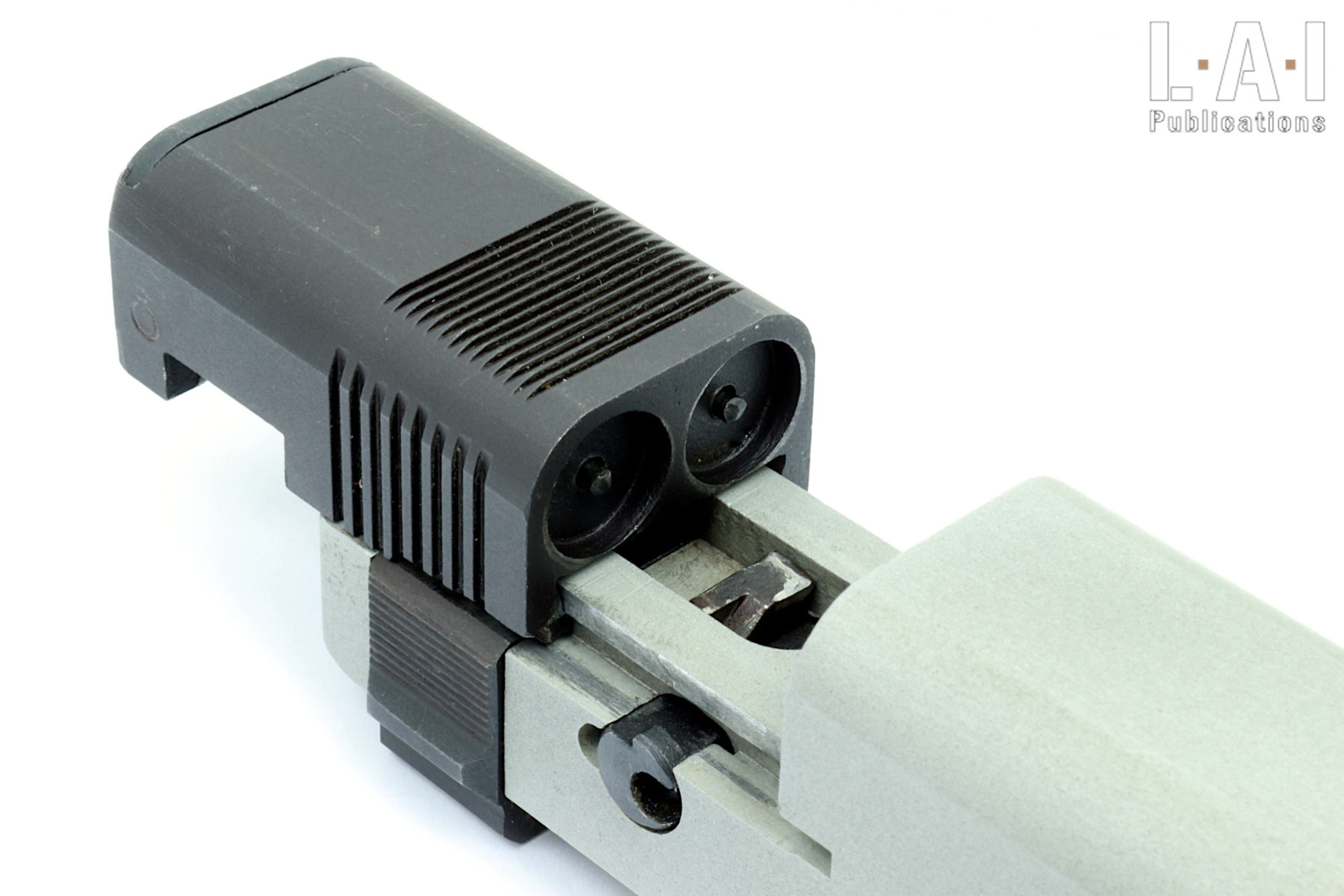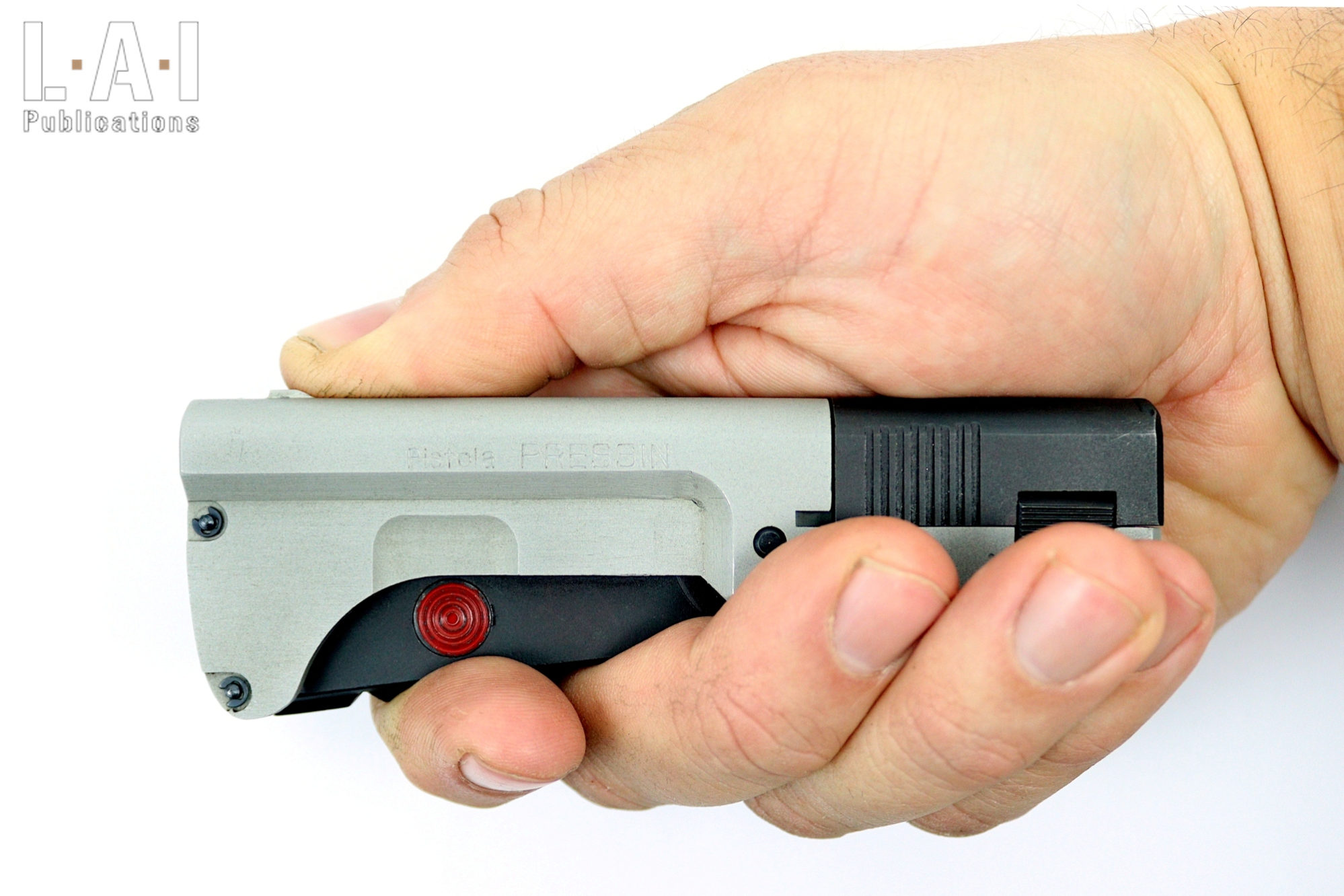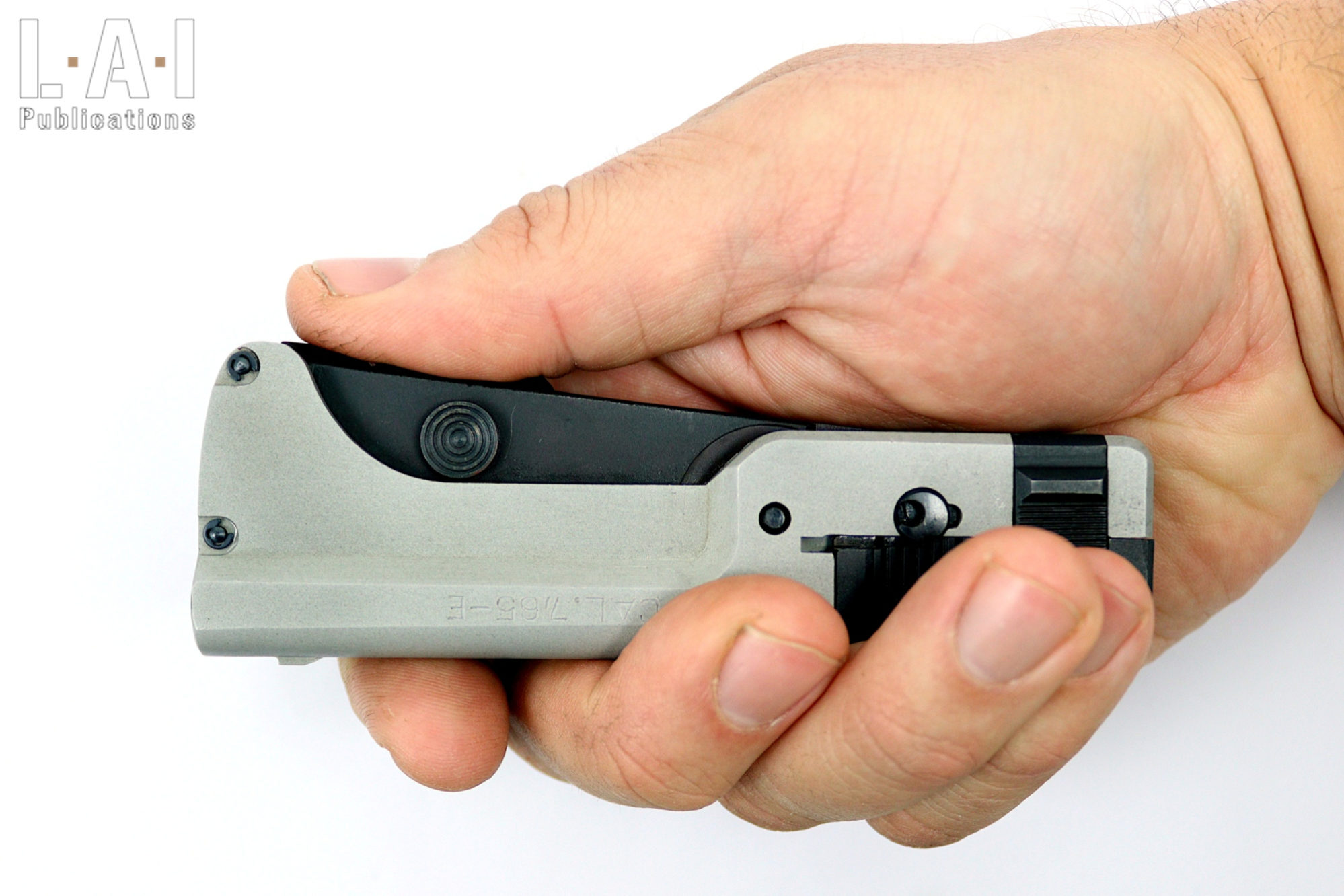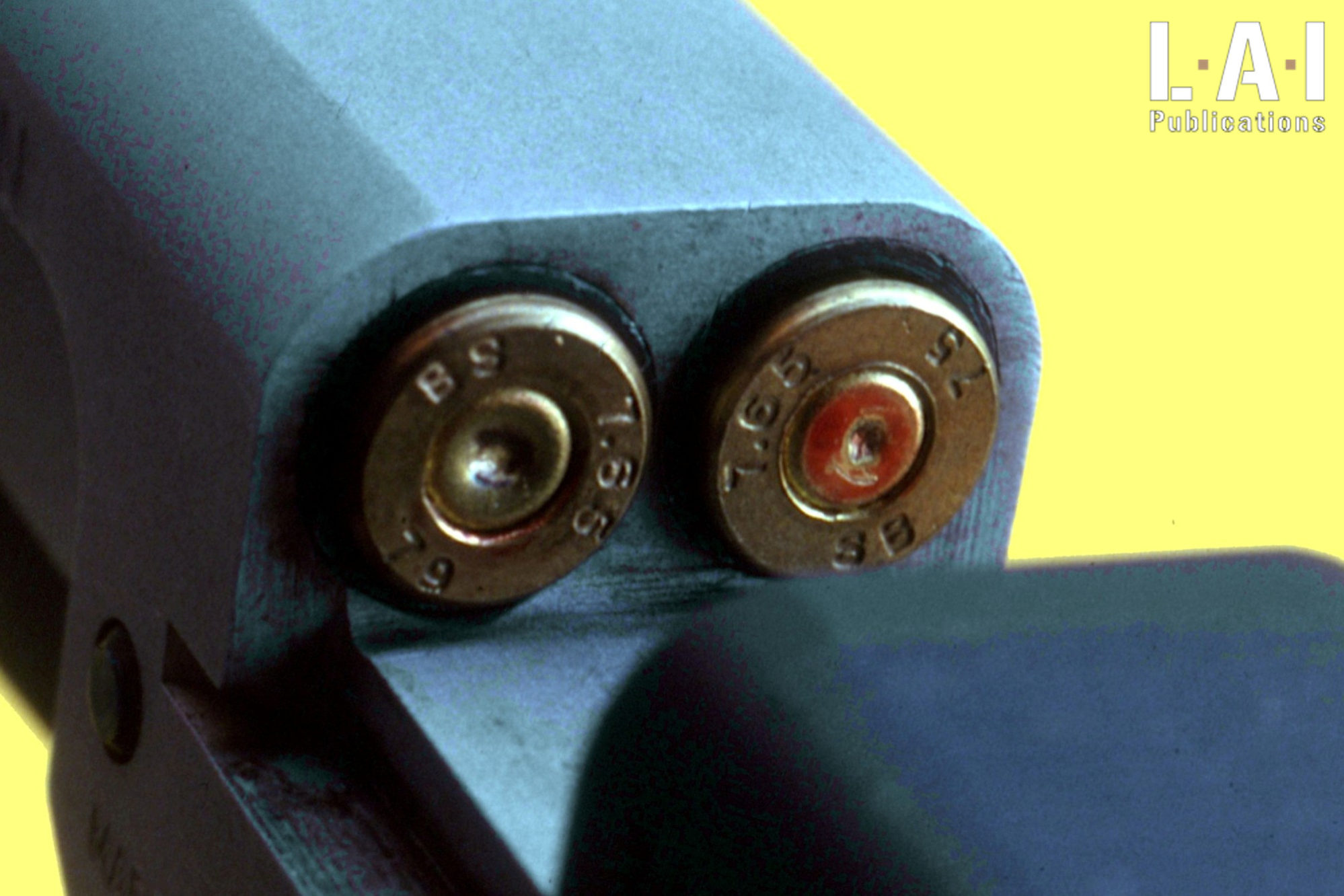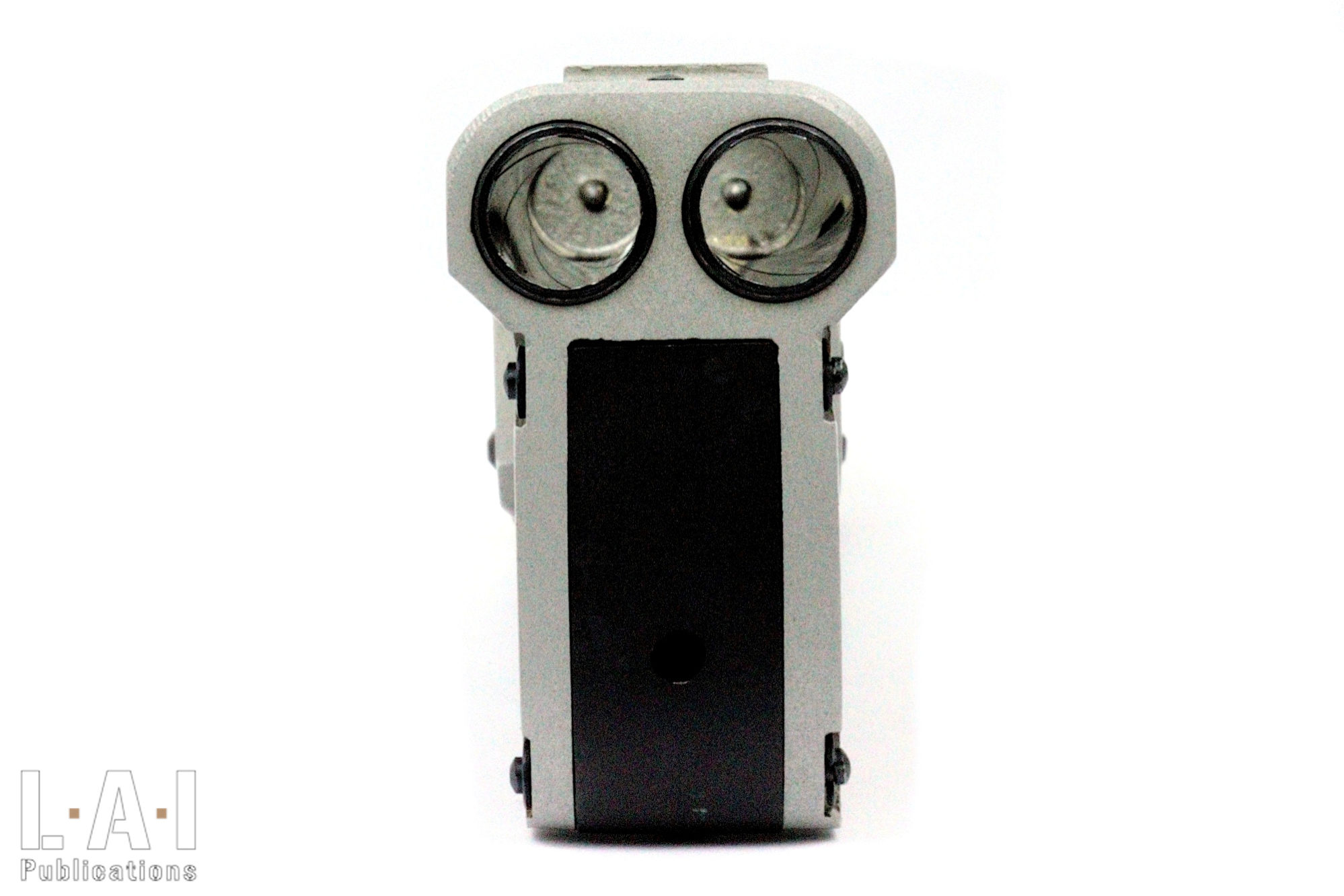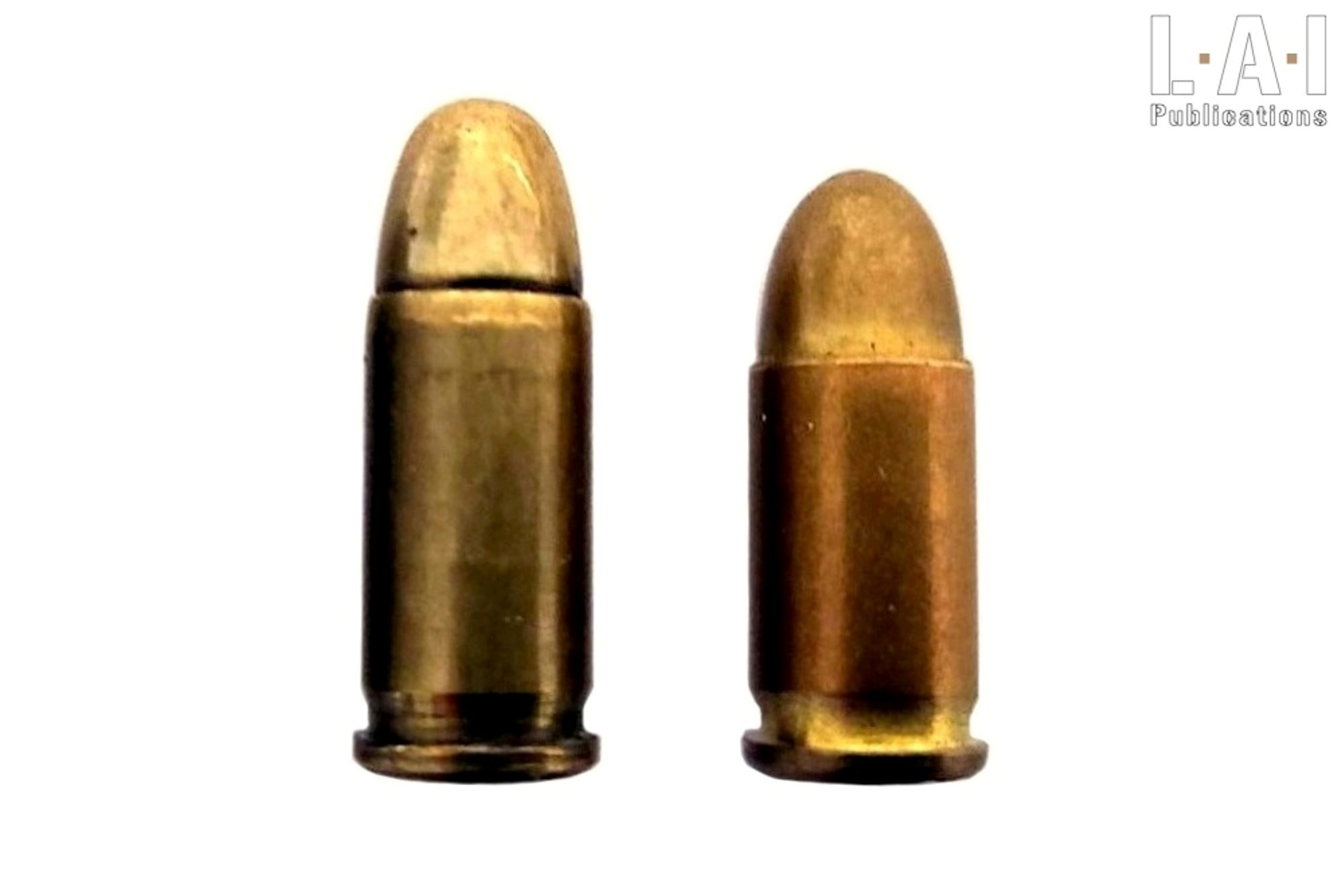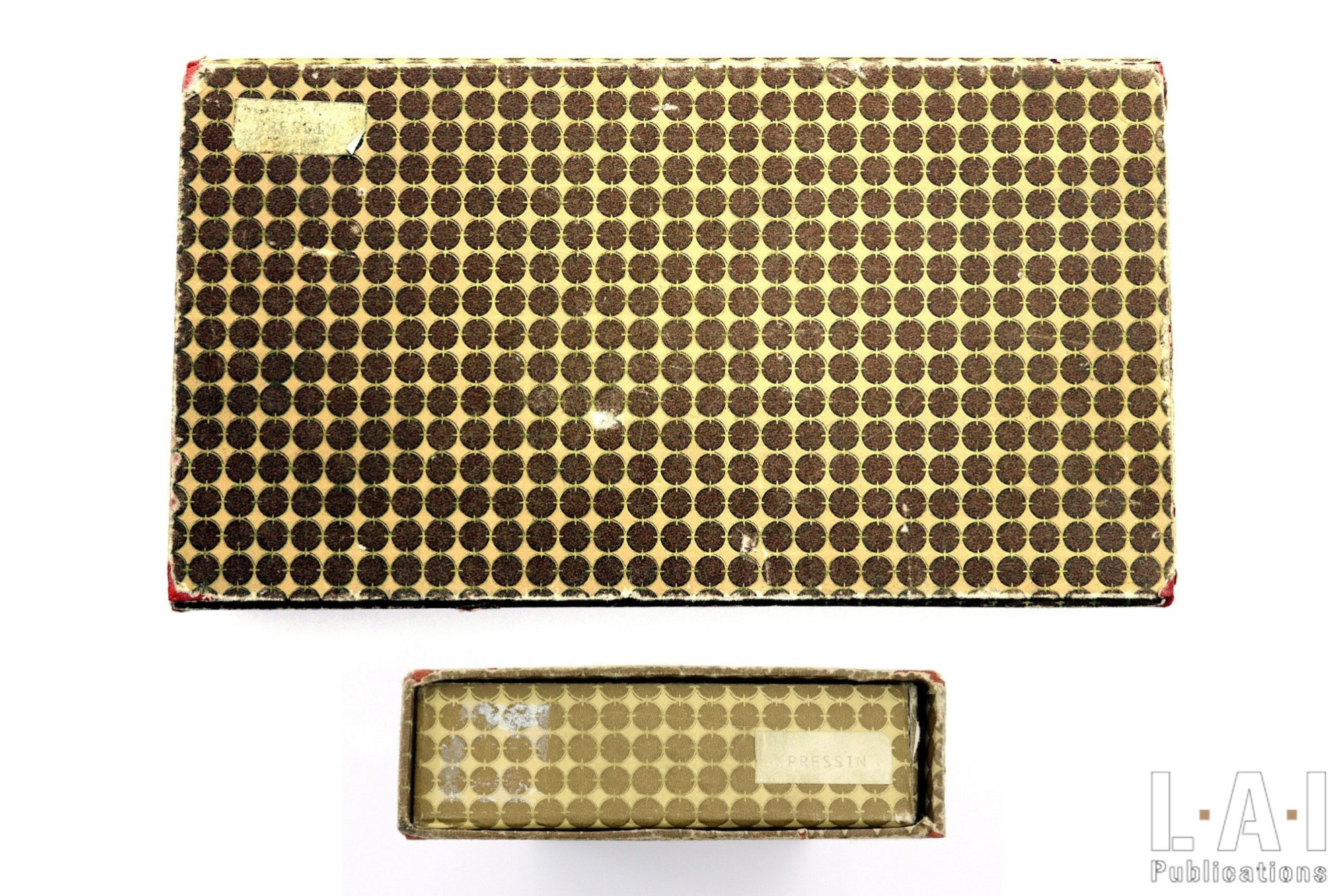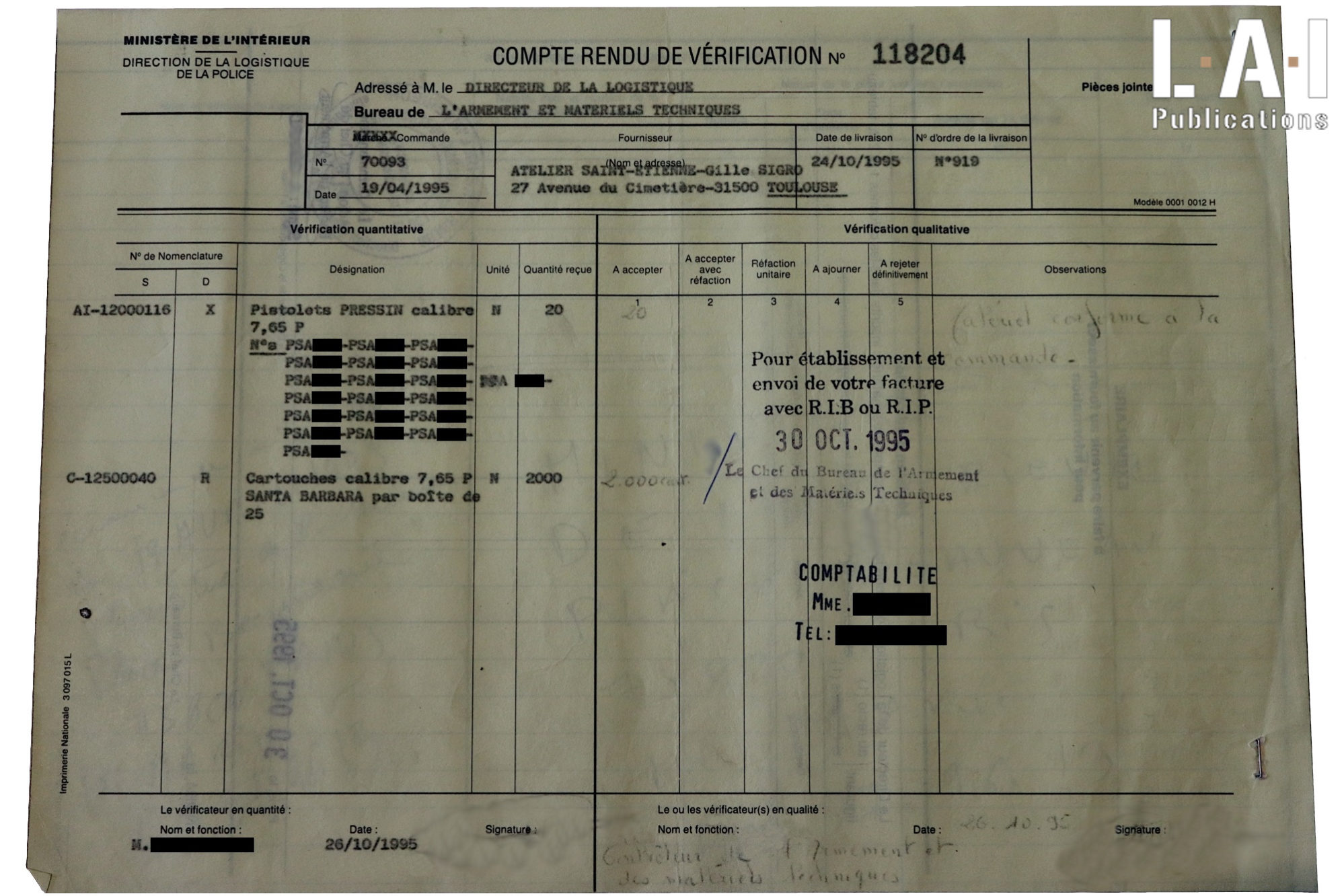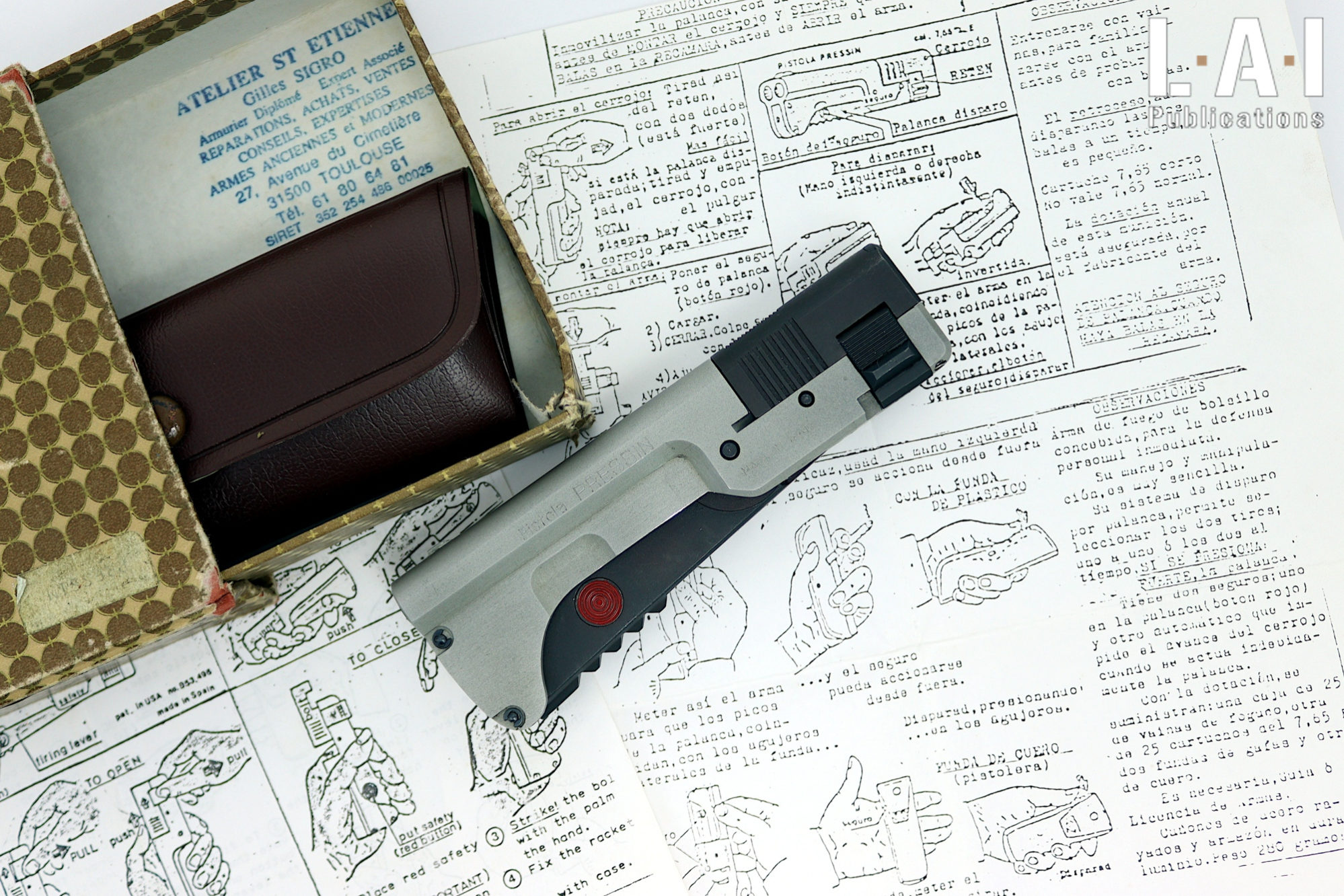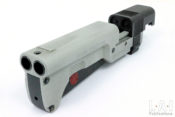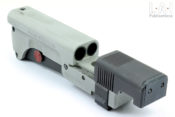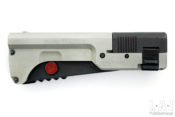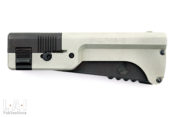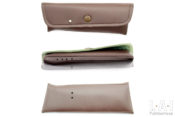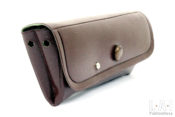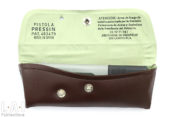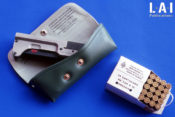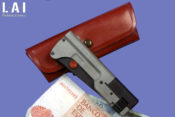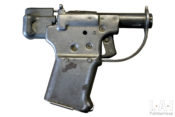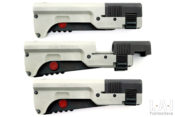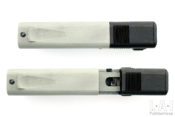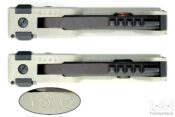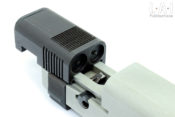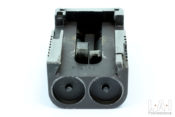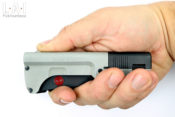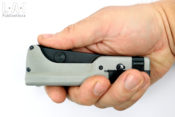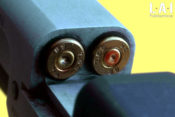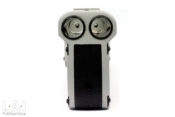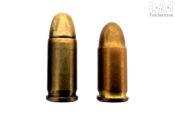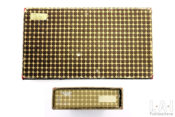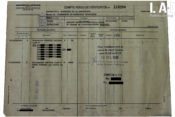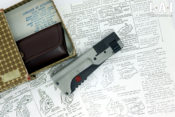The Pressin Pistol

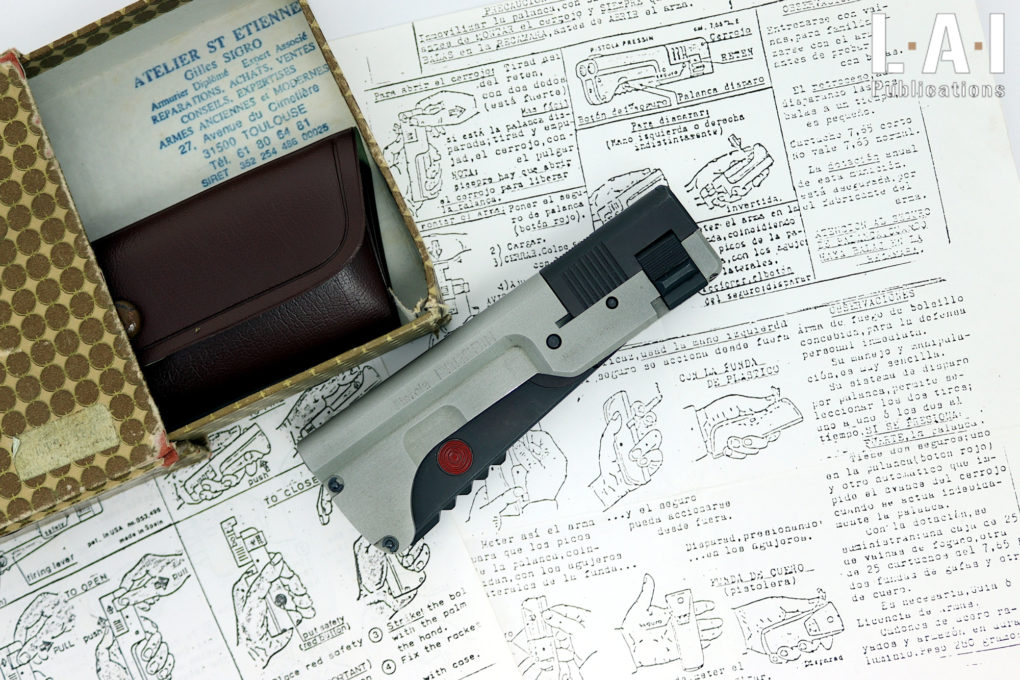
At first glance, this weapon seems to come straight out of the “Q section” arsenal from a good old James Bond movie. However, “la Pistola Pressin” was born in a much less epic context and for a particular purpose: to be the last chance weapon.
One last chance
The patent for this concealed weapon was filed in Madrid on October 22th, 1977 (PDF in attachment at the end of the article!). Although General Franco’s death in 1975 put an end to decades of dictatorship in Spain, the climate had been deleterious since the late 1960s: attacks and kidnappings by ETA and GRAPO were commonplace. The situation was widespread throughout Western Europe where different revolutionary factions were at work. Targets were varied: politicians, military, industrialists… In this climate of violence, the need for security had to be felt at different levels. If the use of bodyguards seems to be a basis in the field of personality protection, everyone cannot afford to use them, and moreover their presence does not prevent any crime. Faced with this multifaceted security problem, it is not surprising that original solutions have emerged.
So, yes, at first glance, this two-shot pistol concealed in a glasses case (available in several colors – Pics.05 to 09) seems very derisory compared to the violence that these revolutionary groups could have shown. But it is here that we must understand the purpose of this weapon: it is not a question of fighting in a street shooting, but of having a “last ace up one’s sleeve” to play as a last resort, if the situation required it. What is the situation? Probably finding oneself face to face with an unvigilant jailer… and to neutralize him, either to flee, or to seize a more substantial armament … or both! In this purpose, it is quite comparable to what the pistol “FP-45 Liberator” or pistol-pen “Stinger” allows (Pics.10 and 11) … but thought in a more defensive than offensive purpose, if indeed the two weapons mentioned above were thought in an offensive purpose (we fantasize too much about what combat actually is: some people even tend to take John Wick for a documentary… while it’s fiction, for real if I might say so!). It is not only comparable, it is superior, because it offers an immediate two-shot capability, in a caliber powerful enough to neutralize an individual. As for questioning the lethality of an ammo with performances close to a 7.65 mm Browning, let’s have doubtful people offer their breasts to science!
The weapon would be put into manufacture at the Llama factory in 1978 and would remain available from the manufacturer, out of catalog, until 1995. Production is usually advertised at 900 units. It is also often mentioned that a large part of the manufacturer’s stock was deactivated after its bankruptcy and the weapons thus deactivated were marketed in Spain.
A very strange object
The weapon is therefore in the form of a parallelepiped block with two side-by-side barrels, a mobile breech and a trigger lever on its lower part. The latter is equipped with transversal safety. The lower front part of the frame has a return to the muzzle of the barrels, which ensures (at least in theory!) that the weapon cannot recoil inside the hand when firing.
To load the weapon, it is necessary to manually lower the breech lock and then pull the breech backwards (Pics.12 and 13). This last action returns the trigger lever to the cocked position: it is then possible to engage the safety by pushing it on the right flank (Pic.14). Once engaged, it prevents the compression of the trigger lever… This could not be more recommended for further loading operations. The ammunition can then be introduced directly into the chamber. The breech is then pushed into the closing position, the lock automatically repositioning itself at the end of the movement. The two firing pins are cocked on the forward movement of the breech. Once the safety is removed, the pressure of the trigger lever causes the successive firing of the shots: on the first part of its course, it fires the right shot, then on its second part, the left shot. The left shot is therefore released after a stronger pressure than the right shot (because its cocking notch on this striker is much longer – Pics.15 and 16). It is thus possible to trigger both shots on the same movement and very quickly.
It is necessary to be extremely careful when using this weapon: as on many excessively short weapons, it is very easy to position a finger (or worse…) in front of the barrels before firing! The manual (PDF available in English and Spanish at the end of the article) tells us that it is possible to use the weapon two ways:
- Either by positioning the thumb on the print intended for this purpose on the top of the weapon and activating the lever with the other fingers under the weapon (Pic.17).
- Either by positioning the thumb on the lever and surrounding the rest of the weapon with the other fingers (Pic.18).
The thing is not without reason: by seizing the weapon in an emergency, one acts “as he can”. And in all cases the muscular effort must be done between the thumb and the index finger. However, if unfortunately, you manage to trigger the shot by exerting pressure between the palm of the hand and the little finger… You may well be the victim of your own weapon! Also, it is advisable to familiarize oneself with this weapon before considering its use… as always when it comes to firearms!
The weapon has no disposal for extracting or ejecting of the spent cases: it is therefore necessary to extract them with a rod once the weapon was shot (Pic.19). This absence is not particularly shocking: it is a “last chance weapon”. It is up to its wearer to evaluate the right time to use it as a “one-time shot”, without reloading opportunities… Perhaps it will even be wiser to get rid of this bulky object (in the sense of responsibility) after its use… In the same spirit, the weapon comes with a single “glasses case” … while it is certain that it will be destroyed at the first shot… The manufacturer seems to have been realistic about the use of his weapon. Obviously, for training, there is no point in sacrificing the case…
The manufacture of the weapon is externally very neat, and the object inspires, at first glance, confidence in terms of solidity. However, when disassembling the weapon, we see something quite common on some Spanish productions: the metallurgy and internal finishes do not seem to be optimal. In addition, parts show signs of wear fairly quickly. But, here too, it is necessary to be pragmatic: given the mission of the weapon, its solidity is undoubtedly in line with what is to be expected. The presence of a rifled barrel raises questions: given the envisaged engagement distances (clearly, from the point-blank end), a smoothbore barrel (as on the FP-45 Liberator) would have done the job (Pic.20). However, beyond the bullet’s stabilization, the presence of grooves in the barrel constitutes a “brake” for the bullet, which allows, by an increase in pressure, to increase its exit velocity … therefore the terminal ballistics performance of the bullet.
In the radius of curiosities, the weapon is duly proofed by the Eibar proof house… while the caliber is not listed in the CIP! Undoubtedly, at that time, the application of standards was more “flexible” (visible in Pic.14).
Because yes, the weapon is not in “7.65 mm Browning”, but in ” 7.65 E “: it is a 7.65 mm Browning whose semi-rim is removed, and which is shortened to 15 mm (Pic.21). Better, according to some sources, the ammunition would even be “over-loaded” compared to a 7.65 mm Browning: in these 80 mm barrels (including chambers), it would propel the 5 grams bullet to 250 m / s. Thus, the weapon would offer (we have not carried out a test to affirm it) a ballistic identical to a 7.65 mm Browning pistol while not being able to be supplied by common ammunition, and this probably in fear of seeing the weapon turn against their creators … but this time, in an offensive purpose.
In conclusion
Like the majority of weapons in its category, the “Pistola Pressin” is a superb collector’s item, testimony of an era. A realization finally quite well thought out… because its patent would be filed 1 year before the kidnapping and execution of the Italian politician Aldo Moro. If this abduction is not an isolated phenomenon (quite the contrary), its symbolic significance clearly demonstrates that this concern is not a fad, but a topical issue at the time. Of course, we are not saying that the use of such a weapon could have changed the tragic fate of this Italian politician. However, one thing is certain, faced with the inevitable, some risks become acceptable and some solutions, saving.
Arnaud Lamothe
This is free access work: the only way to support us is to share this content and subscribe. In addition to a full access to our production, subscription is a wonderful way to support our approach, from enthusiasts to enthusiasts!
For information, 20 copies of these weapons were sold in 1995 to the French Ministry of the Interior, probably more as a technology watch than for real use (Pic.23). However, we can perfectly suspect that this kind of equipment can meet very specific needs for some agents of a unit formerly called DST … or what is still named, DGSE.
Acknowledgments:
Jean-Pierre Bastié for his wise proofreading and for the picture 08,09 and 19.
Gilles Sigro for our numerous fruitful discussion and for his informations (about this subject…but also other ones!).
https://ateliersaintetienne31.fr/
Esistoire for the picture 21.
Special thanks: Jean Paul Sapé, for having preserved and made available to me one of the last copies of the weapons distributed by M. Sigro Gilles.


